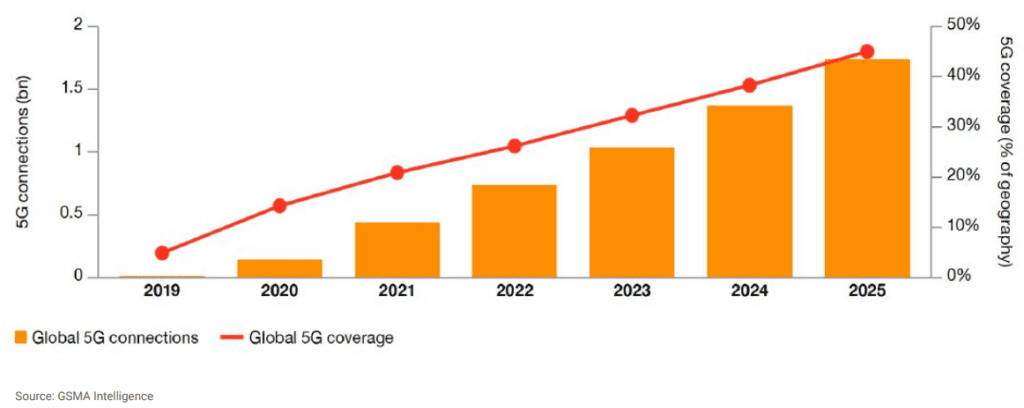|
Getting your Trinity Audio player ready...
|
The pandemic has “highlighted the critical nature of an innovation culture,” states WAN-IFRA’s World Press Trends 2020-2021 report. Majority of the publishers surveyed for the report (90+ executives globally) were bullish about the importance of innovation in the success of their firms.
Fostering a culture of innovation in the long term pays dividends. Executives from organisations that have a strong culture of innovation are reporting greater digital audiences and higher profits – and are more optimistic about their firm’s prospect to fully recover from the coronavirus pandemic in the future.
World Press Trends 2020-2021, WAN-IFRA
7x more likely to report booming revenues
WAN-IFRA’s analysis shows that organisations whose executives are confident about their deliberate, comprehensive and disciplined approach to innovation are growing audiences, revenues and are more resilient. “The more innovative the company, the greater the growth in digital audiences over the past 12 months (r = .333; p < .01) and the higher the overall profit (r = .298, p < .05),” according to the report.
The analysis also shows that organisations that are more innovative and profitable, reduced their workforce less (r = .25; p < .05) due to the pandemic, compared to those who scored low in these areas.

The current findings underline those of the last Outlook survey which showed that firms that had a high Innovation Climate were nearly seven times more likely to report booming revenues, compared to those with low scores in this area.
While innovation does not always depend on technology, it’s often facilitated by it. Keeping that in mind here are the top tech trends presented in the report that publishers need to know about.
Biggest impact on journalism over the next five years
Artificial Intelligence is now increasingly being used by publishers for content creation, automation, personalisation, predictive analysis, subscriptions and more.
An upcoming WAN-IFRA report on AI and reader revenue has 76% of respondents saying that AI is important to the success of their business over the next 3 years. About 55% say they are already using AI in some capacity.
Reuters Institute’s 2021 Predictions Report has 69% of respondents saying that AI will have the biggest impact on journalism over the next five years, ahead of 5G (18%), and new devices and interfaces (9%).
AI can help to wash away some of the biases that have plagued newsrooms, and improve the diversity of stories and audiences.
World Press Trends 2020-2021, WAN-IFRA
The report advises publishers to understand where AI fits in their organization. It does not have to be a “sweeping solution.” Publishers will first need to identify the right applications for their businesses. The next step would be determining how to implement the solution – whether through purchase, partnership, acquisition or by building it.

The authors suggest publishers redeploy savings from AI investments to improve journalistic quality. “AI is not going to be a game-changer for journalism immediately,” they write, “but has the potential to help improve journalism in an incremental way that will have positive long-term structural effects.”
45% of the world will be covered by 5G by 2025
5G is steadily getting rolled out in many countries worldwide. “The pandemic has highlighted both the current limitations and future potential of connectivity, and accelerated likely demand for 5G,” the report notes.
The number of countries with 5G deployments increased by 62.3% between Q3 2019 and Q3 2020. Ookla, a mobile phone performance testing firm, projects that 99 countries will have 5G deployments at the end of this year’s third quarter.
GSMA Intelligence estimates that 45% of the world will be covered by 5G by 2025 connecting 1.7B devices.

The technology will allow users to access greater quantities of content and services like never before. This will open up new opportunities for publishers in how they serve content and advertising, and gather news.
As 5G becomes common, users expectations from multimedia mobile content will also rise. Publishers using video would have less need to prepare content specifically for mobile. They can also expect new ad formats and pricing options due to reduced load times and higher resolutions.
The authors recommend publishers to start exploring the technology, and to make sure their “websites are optimised as much as possible.”
“You cannot afford to get up to speed late on this one,” they comment.
“Smart speakers are edging towards mainstream”
5G technology is also expected to contribute to the growth of smart audio and voice devices. This is another area that offers great potential considering the remarkable growth it has seen in the last few years. The usage of AI-driven smart speakers rose from 14% to 19% in the UK, from 7% to 12% in Germany, and from 9% to 13% in South Korea between 2019 and 2020.

Similar to AI, the report recommends publishers to understand how their services would best fit with smart audio devices. Broadly, there are three categories of smart speaker content – ambient (music, podcasts), assistive (flash briefings, weather reports) or compelling (quizzes, children stories).
Many news publishers experimented with flash briefings early on. Overtime, the daily news podcast has acquired center-stage following the success of NYT’s The Daily and The Guardian’s Today in Focus.
The format is useful for publishers as it helps build habits and also attracts young audiences. It’s also easier and cheaper to get into compared to say, video. And publishers who already have audio offerings—like podcasts—can repurpose the content for smart speakers.
“Transform their business now, not tomorrow”
Looking ahead, reader revenue will continue to increase in importance in the coming years. Subscriptions (21%) make for the second most important source of income for publishers after advertising (27%), the WAN-IFRA Outlook survey found. Both can be greatly enhanced by the technologies recommended in the report.
Whether it’s AI to study user behavior and personalise content and communication, or 5G to serve higher quality content, publishers need to explore them to get their businesses future ready.
“Despite the damage done, the pandemic has accelerated publishers’ plans to transform their business now, not tomorrow – and to embrace the uncertainty and challenges that come with that,” writes Dean Roper, Director of Insights, WAN-IFRA.
“Quite simply, they don’t have a choice anymore.”
Dean Roper, Director of Insights, WAN-IFRA
The full report is available at WAN-IFRA:
World Press Trends 2020-2021



